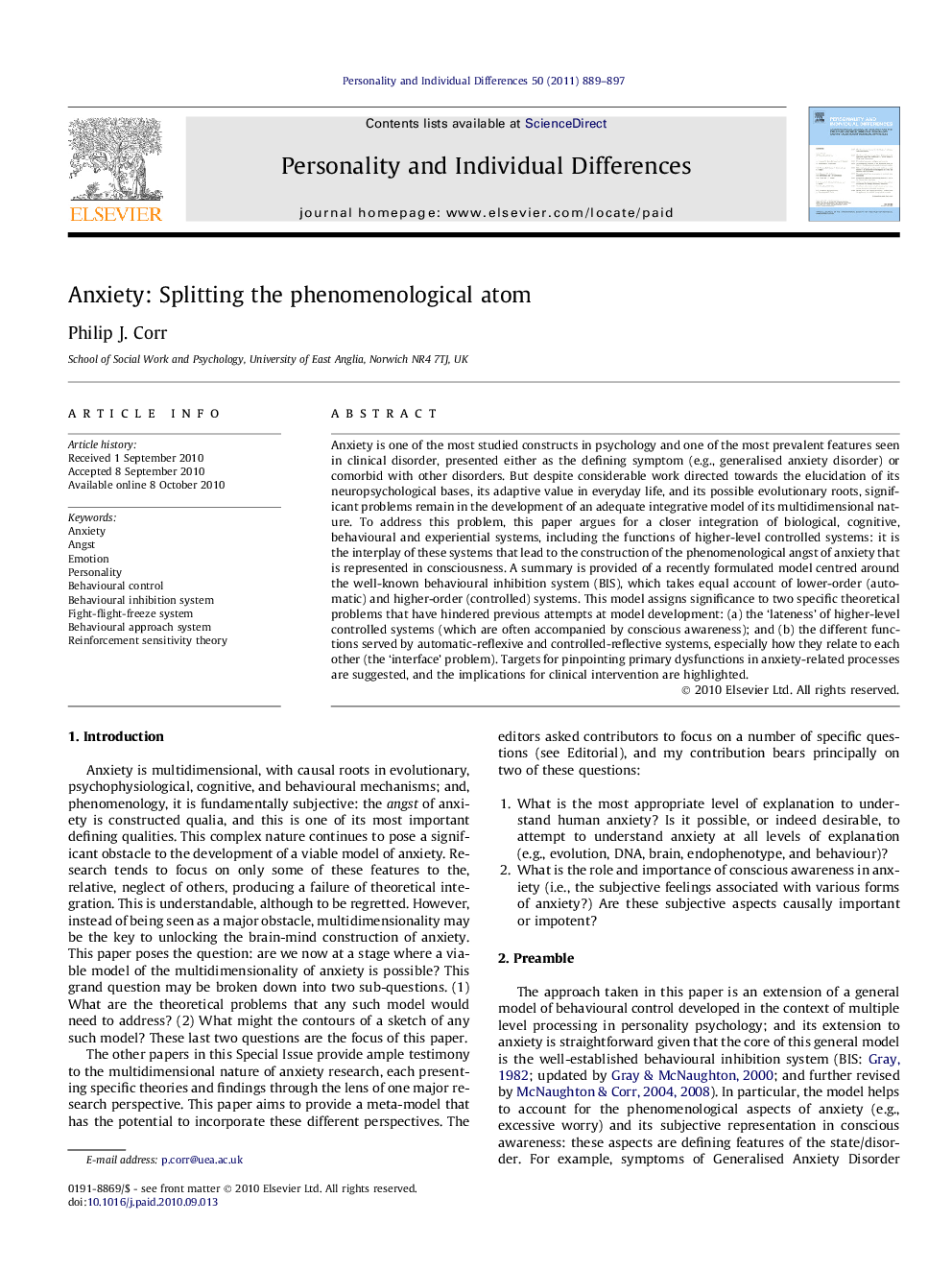| کد مقاله | کد نشریه | سال انتشار | مقاله انگلیسی | نسخه تمام متن |
|---|---|---|---|---|
| 891518 | 914046 | 2011 | 9 صفحه PDF | دانلود رایگان |

Anxiety is one of the most studied constructs in psychology and one of the most prevalent features seen in clinical disorder, presented either as the defining symptom (e.g., generalised anxiety disorder) or comorbid with other disorders. But despite considerable work directed towards the elucidation of its neuropsychological bases, its adaptive value in everyday life, and its possible evolutionary roots, significant problems remain in the development of an adequate integrative model of its multidimensional nature. To address this problem, this paper argues for a closer integration of biological, cognitive, behavioural and experiential systems, including the functions of higher-level controlled systems: it is the interplay of these systems that lead to the construction of the phenomenological angst of anxiety that is represented in consciousness. A summary is provided of a recently formulated model centred around the well-known behavioural inhibition system (BIS), which takes equal account of lower-order (automatic) and higher-order (controlled) systems. This model assigns significance to two specific theoretical problems that have hindered previous attempts at model development: (a) the ‘lateness’ of higher-level controlled systems (which are often accompanied by conscious awareness); and (b) the different functions served by automatic-reflexive and controlled-reflective systems, especially how they relate to each other (the ‘interface’ problem). Targets for pinpointing primary dysfunctions in anxiety-related processes are suggested, and the implications for clinical intervention are highlighted.
Journal: Personality and Individual Differences - Volume 50, Issue 7, May 2011, Pages 889–897